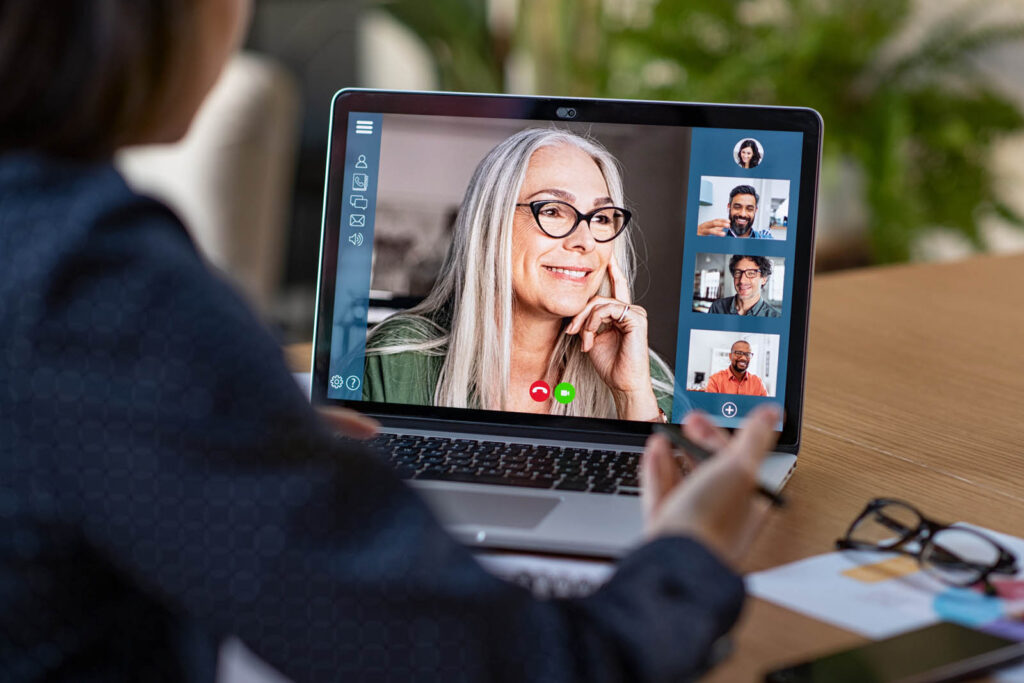
Case Study
Developing a Unique Brand Identity in an Emerging Tech Space
overview
When it comes to hosting virtual meetings, the software is paramount. The meeting platform becomes the host’s virtual persona, so when technical problems arise, it reflects poorly on the host. If too many things go wrong, an embarrassed host might abandon a virtual meeting platform altogether.
When we met, our client, a virtual meeting provider, was looking to develop a unique brand identity and creative campaign to help them rise above the competition. After two rounds of qualitative focus groups, they had developed, tested, and refined brand positioning statements, and were ready to launch a new creative campaign.
THE PROBLEM
Standing Out in a Crowded Marketplace
Our client, a major provider of virtual meeting tools, wanted help standing out in a crowded, competitive marketplace. Specifically, they wanted to learn the best ways to drive consideration, trial, and conversion with business decision makers who host online meetings.
To achieve this, the client needed an understanding of the competitive landscape, including how consumers view competitor virtual meeting software providers (both free and paid), along with a deep dive into current and prospective customers’ wants, needs, and decision-making processes.

OUR APPROACH
A Two-Phase Focus Group Study
To help our client design an overarching brand strategy, C+R Research elicited consumer experiences and opinions via two rounds of qualitative focus groups. Focus groups were held in three markets with business decision makers who regularly hosted and attended online meetings.
The first round of focus groups provided a foundational understanding of the category and competitive landscape. We explored the context of users’ experiences, elicited key drivers in the category, and started to map the customer journey from free to paid products. Using projective techniques, like image and automotive metaphors, we explored how consumers view the major players in the category and the role our client’s brand plays in the space. From the unique benefits we identified, our client crafted multiple positioning statements.
The second round of focus groups elicited feedback on the client’s new statements. For these groups, we engaged several different types of consumers: those who used the client’s free and paid versions and those who used competitors’ platforms. Using a mark-up tool, respondents rated each statement. Ultimately, we identified key themes that connected with users, fit with the brand, and were differentiating and motivating.
For each round, we conducted ten focus groups in two markets (five groups per market). Each group contained six respondents, allowing us to speak with 120 unique business decision makers. The groups were divided to capture our client’s different potential consumer bases, including paid users, free users, competitive users, and those who attended online meetings but did not host them.
Groups contained business decision makers from a range of industries and a mix of small (1-99 employees) and medium-sized organizations (100-499 employees). Most groups were comprised of meeting organizers (i.e., those who had hosted at least one virtual meeting within the past three months). We held one group per market solely with meeting attendees (those who had attended at least four virtual meetings within the past three months).

The result
The Sweet Spot
In the first round of research, the team discovered that the client’s software was positioned within users’ “sweet spot”: it was seen as professional enough for the most important meetings, but not overly complicated or intimidating to use. We also learned that the free version of the client’s software was not well known, presenting an opportunity to build brand awareness: with positive experiences using the free version, users may be more likely to switch to the paid version as their business or responsibilities grow. Results from the second round of focus groups showed that users connected best with positionings that highlighted how virtual meeting tools help business users achieve their goals.
Equipped with these findings (and more), by the end of the engagement, our client was ready to launch their new creative campaign!


proven experience
related case studies
